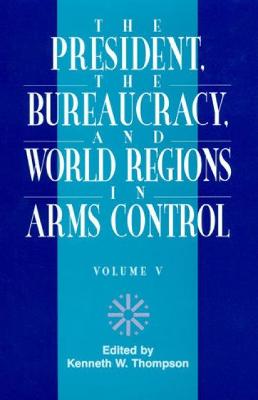W. Alton Jones Foundation Series on the Presidency and Arms Control
1 primary work • 2 total works
Volume 2
The role of American presidents in the formulation and negotiation of arms control remains obscure and unclear, and this fact provides justification for the newest series of books from the Miller Center. Presidents and Arms Control addresses the milieu of arms control in the nuclear age and the decision-making style of presidents. In addition, this volume focuses on the negotiation of arms control agreements; the ratification process of treaties by the Senate; the potential role and limitations of the Arms Control Disarmament Agency; and the prospects for arms control and nonproliferation in Europe. Contributors: Robert A. Strong, James E. Goodby, Sidney Graybeal, Patricia McFate, Paul H. Nitze, Major General William F. Burns, Michael Krepon, Janne Nolan, Duncan L. Clarke, and Jonathan Dean. Co-published with the Miller Center.
The President, The Bureaucracy, and World Regions in Arms Control, Vol. V
by Kenneth W. Thompson
Published 2 June 1998
Copublished with the Miller Center, this book explores the complex and significant subject of arms control. In Part I, 'The Presidency and the Process,' the authors examine the general relationship between the presidency and the arms control process, and then look in particular at Jimmy Carter's place in the Cold War. In Part II, 'World Regions and Arms Control,' the authors explore structures for security in Europe, and security and arms proliferation in Asia.

